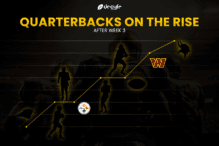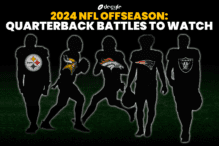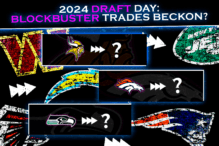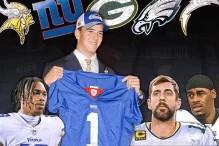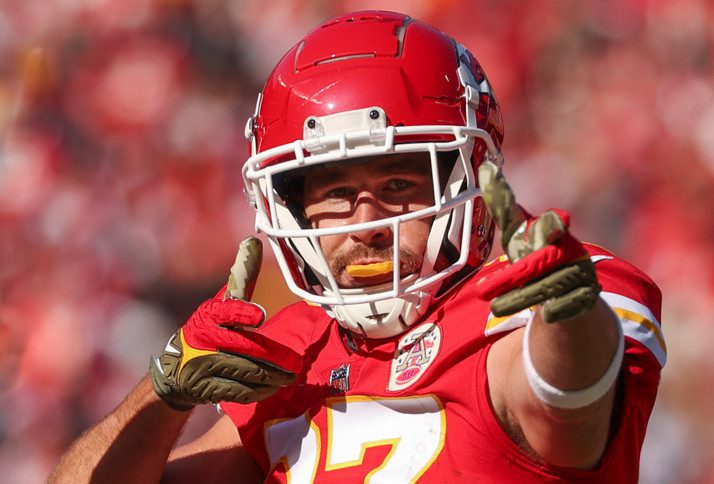

When it comes to managing the salary cap every offseason, general managers around the league have two dates in particular circled on their calendars. The start of the new league year and June 1st – when those players that were released with a ‘post-June 1 designation’ are finally taken off the books. But what is a ‘post-June 1 designation’ and how does it impact all of the NFL’s teams?
What is Cap Space?
In short, the NFL Salary Cap refers to the amount of money that all 32 teams are allowed to spend on player salaries and bonuses in any given year – with ‘cap space’ referencing the amount of money teams have available to upgrade their rosters via trades, free agency or contract extensions.
In February, the NFL announced that the salary cap in 2024 would be increased by $30.6 million from the previous season – meaning teams are required to operate within a limit of $255.4 million.
ICYMI: The NFL informed teams that the 2024 salary cap will be $255.4 million – an increase of $30.6 million from last year.#Decyfr #NFL #NFLUK pic.twitter.com/mLewnrBmXf
— Decyfr Sport (@DecyfrSport) February 26, 2024
By the start of the new league year – March 13th – every team needed to ensure that they were under the cap in order to comply with league rules.
One of the primary ways in which teams will clear cap space is through ‘cuts’. In other words, through releasing players from their current contracts. However, this can result in hefty ‘dead cap’ charges – with ‘dead cap’ defined as a salary cap charge for a player that is no longer on the roster.
That said, through designating a player as a ‘post-June 1 cut’ – teams can mitigate the immediate impact of said dead cap.
What are Post-June 1 Cuts?
If a player is released before the 1st of June, the entirety of their remaining prorated signing bonus will count as dead cap for the forthcoming season. However, if a player is released after the 1st of June, teams can spread this dead money over two seasons.
For instance, if a team opts to release a player with four years left on their contract and $10 million worth of prorated signing bonus owed to them in each of those four seasons – by making this player a ‘post-June 1 designation’, the dead cap charge would be spread over the following two seasons – i.e. 2024 and 2025 – rather than the entire $40 million counting against their 2024 salary cap.
The Denver Broncos and Russell Wilson are a prime example of this. In 2022, Wilson penned a five-year deal worth $242.5 million with the Broncos. Following two incredibly underwhelming seasons from the nine-time Pro Bowl quarterback, head coach Sean Payton made the decision to part ways with Wilson this offseason and in doing so, absorbing the largest dead cap hit in NFL history, at $85 million. However, through designating Wilson a ‘post-June 1 cut’, Denver is able to split said dead cap hit across 2024 and 2025 – $35.4 million and $49.6 million respectively.
Russell Wilson’s time in Denver came at a COST 🤯#Decyfr #NFL #BroncosCountry pic.twitter.com/IjwEvlRfVO
— Decyfr Sport (@DecyfrSport) March 5, 2024
Players who are designated a ‘post-June 1 cut’ are, however, able to sign with their new team beforehand – allowing them to attend all offseason activities before they are ‘officially’ released from the books in June. Hence why Russell Wilson has been with the Pittsburgh Steelers since he signed in March.
While an incredibly beneficial tool, the ‘post-June 1 designation’ isn’t without its limitations. Until the 2nd of June, teams are forced to operate with the entirety of a player’s dead cap – providing them with less cap space with which they can sign free agents throughout the majority of the offseason. It is also worth noting that teams are only able to use the ‘post-June 1st designation’ on two players per season.
Below is a list of every NFL team with a ‘post-June 1 cut’ in 2024.
AFC:
Buffalo Bills: CB – Tre’Davious White
Miami Dolphins: CB – Xavien Howard
Baltimore Ravens: WR – Odell Beckham Jr.
Denver Broncos: QB – Russell Wilson
Las Vegas Raiders: QB – Jimmy Garoppolo
NFC:
Dallas Cowboys: WR – Michael Gallup
Detroit Lions: CB – Cameron Sutton
Green Bay Packers: LB – De’Vondre Campbell
Arizona Cardinals: OT – D.J. Humphries
San Francisco 49ers: DL – Arik Armstead
New Orleans Saints: QB – Jameis Winston, WR – Michael Thomas
Tampa Bay Buccaneers: DE – Shaquil Barrett
https://decyfrsport.com/nfl-101-post-june-1-designation-explained/
Copied!
















